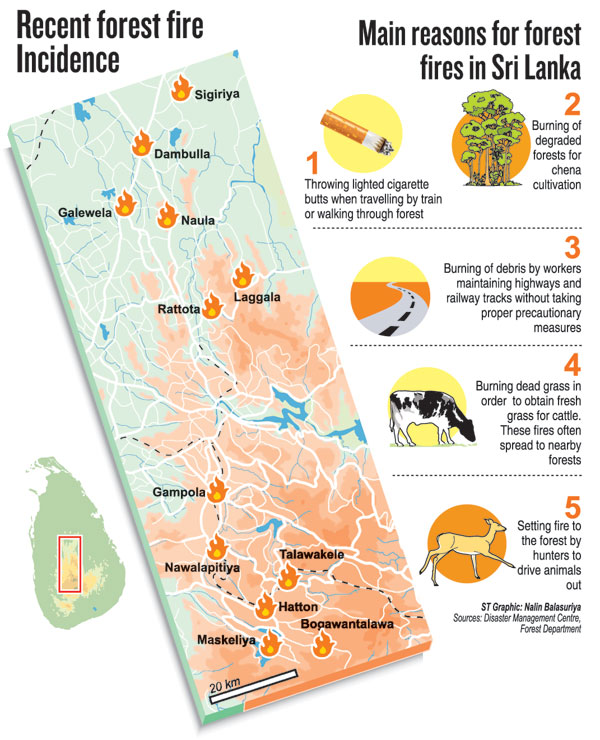
Farmland, forests and fauna suffer in mountain fires
Forest fires across the central part of the country, aggravated by dry conditions, have left hundreds of acres of trees destroyed and brought suffering and death to wild animals.
Firefighters continue to tackle a huge blaze in Ravana Ella, Badulla, with nearly 20 acres of land laid waste by fires spreading in the mountainous regions.
The Department of Wildlife Conservation says nearly 60 hectares (148 acres) of farmland have been destroyed in forest fires so far this year.
There have been several fires in the past two weeks, with incidents being reported from the Naula, Laggala, Rantota, Dambulla, Gallewela, Sigiriya, Gampola, Nawalapitiya Hatton, Maskeliya, Bogawantalawa and Talawakelle, the Conservator-General of Forests, Anura Sathurusinghe said.
Fires were difficult to control because they were breaking out in remote areas and being aided by the dry weather.
Mr. Sathurusinghe said the blazes were caused by various factors including hunters setting fire to an area of a forest so that animals could be captured and killed when they flee to another area.
The grassland areas of Kandy and Matale are the areas most prone to forest fires. Since dry weather conditions can convert even green vegetation into inflammable fuel even a simple spark can create a big forest fire, he said.
“Particularly during the dry season, people light fires for hunting, chena cultivation and also for cattle grazing.
“These fires are difficult to control and severely damage forest biodiversity,” he said.
Almost all forest fires in Sri Lanka are man-made, through accident or design.
Forest Department sources say farmers sometimes set dead grass alight to clear land to grow fresh grass for cattle, and these fires can spread to adjacent forests. Farmers also burn down degraded forests to clear land for cultivation.
“Forest fires severely damage the eco system: they affect the animals’ breathing, destroy plants and create soil erosion. Amphibians, reptiles and insects are directly affected,” an official of the Environment Conservation Trust said.
“Forest fires directly destroy the seed bank of a plant,” the official added. “These contain seeds needed for the next generation of plants and as a result of these fires many native plants are destroyed.”
Source :Sundaytimes http://www.sundaytimes.lk/160821/news/farmland-forests-and-fauna-suffer-in-mountain-fires-205634.html

Construction and forest clearing in Wilpattu National Park violates conservation laws
WNPS expresses deep concern
The Fauna and Flora Protection Ordinance No 2 of 1937 (as amended, hereinafter at times referred to as the FFPO) which governs the legal administration of the Protected Areas of Sri Lanka clearly states that there can be no development activity or clearing of the habitat within National Parks (Section 6).
According to information available, the Pallenkandal Shrine was built over 300 years ago in what is now the Wilpattu National Park. It was a small chapel placed in an area of less than a quarter of an acre, and was used in an annual feast for fishing communities who reside around the Puttalam Lagoon.
They visited the shrine for two nights a year and stayed in temporary shelters until the festival was over. These shelters were then dismantled at the end of the feast.
During the war, this chapel went into disuse, and the building fell into disrepair, with the roof caving in. Since the end of the war, however, not only has the shrine been rebuilt to greater size than the original, but additional structures have now been added with clearing being made beyond the original boundaries of the shrine.
These are areas previously used by herds of elephants who traditionally graze on the grasslands of the Pomparippu Plain within the National Park, and have done so for thousands of years.
The Wilpattu National Park comprises five Blocks which have been gazetted at various times from 1938 to 1973 under the FFPO. Upon such protection status being given, by operation of Law, all private tenements, rights and privileges seized to be operational over the said land, unless otherwise recognized by Law as a ‘traditional practice/use’ subject to Section 3 (a & b) and 4 of the FFPO inter alia.
They have, however, no right to expand the boundaries of the original site, or to change what was traditionally an annual event to a weekly/monthly feast, as happens now.
The Wildlife & Nature Protection Society (WNPS) is greatly concerned that this blatant breach of the laws of the country are taking place with the Department of Wildlife Conservation (DWC), the statutory guardian of the protected areas, taking no action to stop this illegal development taking place within the boundaries of a National Park.
It is the WNPS’s position that the construction and forest clearing undertaken by the St. Anthony’s Church at Pallenkandal, in the recent past, are inside the Wilpattu National Park and being carried out without resorting to the proper Law and procedure. The construction/renovation and clearing of forest land conducted by and/or on behalf of the said church are in violation of the Law of the Land i.e. Sections 6 (1) of the FFPO No 2 of 1937 (as amended).
In addition, the detrimental impact on the National Park caused by the uncontrolled and/or unregulated human intrusion by thousands of pilgrims who visit the church on a weekly/ monthly/annual basis cannot be ignored, and amount to an offence under the Sections 5, 5 (A), 5 (B) & 6 (1) of the FFPO.
Even to claim any right under ‘traditional use’, a claim which the WNPS does not concede to, the applicable provisions of the FFPO are quite clear that such a right should be exercised subject to the control and supervision of the DWC, as the Custodian of the Wilpattu National Park, who hold it in trust for and on behalf of the people of the Republic.
As such, there is a grave failure on the part of the DWC to uphold their mandate and effectively enforce the law within the boundaries of the Wilpattu National Park.
Rukshan Jayewardene, President of WNPS, said: “National Parks are declared because a nation values and intends to protect its Fauna and Flora that forms an integral part of its natural heritage. National Parks afford the greatest level of statutory protection for wilderness, while also providing for regulated public access.
“Governments hold these lands in trust for all citizens and special interest groups cannot be allowed to violate the integrity of such Protected Areas”.
The WNPS, at 122 years old, is the oldest Non-Governmental Organization in South Asia. It was responsible for setting up and administering the National Parks, and inaugurating the Department of Wildlife Conservation.
With such history and responsibility, the Society is determined to take whatever action is necessary to prevent a precedent being set that will have serious consequences to the future well-being of all of the protected areas of Sri Lanka. Their preservation is vital not just for environmental, cultural and aesthetic reasons, but also for the economic prosperity of this country, and for the benefit of future generations to come. (WNPS Press Release).
Source: The Island http://island.lk/index.php?page_cat=article-details&page=article-details&code_title=150677
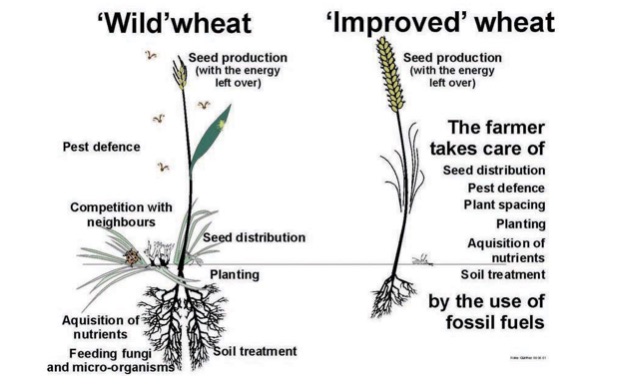
Sitting In The hotseat
Sri Lanka’s position paper on Climate Change given at the COP21 in Paris stated : “We are aware that the optimum operating temperature of chlorophyll is at 37 deg C. In a warming world where temperatures will soar well above that, food production will be severely impacted. We would request the IPCC to address responses to this phenomenon”.
This statement is now being vindicated by the temperature profiles that we are seeing over the planet. July 2016 was the warmest on record. Thankfully the bursts of extreme temperature are restricted to short episodic events, but the trend is that these events will become more commonplace in both frequency and duration. Heat-waves will become a disturbing phenomena that leaves little room for adaptation.
Why are heat waves so dangerous? It is because extreme temperatures experienced in heat waves often exceed the threshold for enzymatic activity. In humans this phenomenon leads to heat stress results in death. The same pattern follows for plants and animals. But I a warming world, long before thermal collapse, we would have succumbed to hunger.
All of agriculture depends on the good growth of plants, all plants rely on their chlorophyll to grow and produce. Chlorophyll is a molecule that functions to an optimum at about 37degrees, above that temperature, its performance falls. In heat waves often exceeding 38 degrees plant productivity will impact photosynthetic productivity and there will be a yield drop (fig1).
The danger to agricultural production is further exasperated by the reliance on chemical farming with so-called ‘high yield ‘ crops of the so called ‘Green Revolution’. These crops have been bred by reducing the plant’s maintenance biomass (leaves and roots) in exchange for crop biomass (seeds or fruit). The reduction of the plant’s natural defenses being made possible by the use of chemical fertilizers and toxins (fig 2). But in a high temperature situation when chlorophyll is functioning sub-optimally such reductions in leaf volume will bring serious crop losses.
Chemical fertilizers are produced using large amounts of energy, usually fossil energy. The creation of this fossil energy results in the discharge of huge volumes of Carbon Dioxide into the atmosphere. This, in addition to the fossil carbon footprint of agro toxins and fossil fuel use adds greatly to global warming which in turn creates the dangerous heat waves around the planet and finally affects the farmer through increased heat stress on the crop.
What are the ways out? One would be to look for plants that have a wide heat stress tolerance; another will be to design future agroecosystems that can use the heat reducing mechanisms of ecosystems to respond to temperature raises.
However one urgent national needed to deal with climate change is to begin mapping out high risk areas in the future and warm farmers in those areas of the steps they should take to adapt to the oncoming changes. Probability maps need to be constructed for temperature, rainfall intensity, wind intensity and salt-water intrusion.
The current rush in high rise construction needs to be critically examined under such a scenario. Recent studies in the US conform that air conditioning is a major contributor to Climate Change because of the use of hydrofluorocarbons (HFCs). HFC’s are 3830 more powerful than Carbon Dioxide as a Greenhouse Gas. The Fossil Carbon cost in generating the energy of such air conditioning has not been addressed. Nor has the contribution of Carbon Dioxide in making cement which works out that cement is sixteen times more powerful, weight for weight, as petroleum is in producing Greenhouse Gasses.
The tragedy in Sri Lanka is that while such statements are made and when even the President promised a fossil free path to development, the country is being carved out to be parceled out to ‘ industrial developers’ with no limits on the percentage of impervious surfaces that can be allowed and who are set to increase Sri Lanka’s Carbon Footprint exponentially with massive urban infrastructure based on concrete and air conditioning. This unreported and unchecked growth of Carbon Dioxide outpouring will increase our Carbon footprint and with each rise in our carbon footprint we ensure the inevitability of a heat stressed future that will place all of us on a hot seat to disaster !
Source : 22/08/2016 Colombo Telegraph https://www.colombotelegraph.com/index.php/sitting-in-the-hotseat/
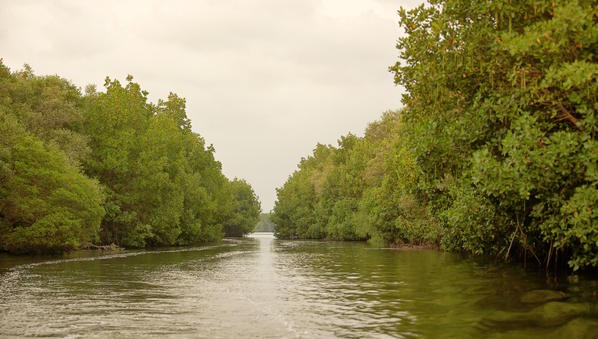
Sri Lankan mangroves respond to conservation plan
Speed read
- The 2004 Asian Tsunami brought home the protective value of Sri Lanka’s mangrove forests
- Mangroves were once being cut down to make way for large-scale shrimp farming — which failed
- A revival begun a year ago has resulted in the revival of about 18,000 hectares of mangroves
A year after Sri Lanka launched a mangrove conservation plan with funds from a U.S. conservation group about half of its 37,000 hectares of mangrove forests are in a various stage of revival, officials say.
With US$ 3.4 million from the Califronia-based Seacology and manpower and other support from the Sri Lankan government, some 283 community organisations have been engaged in the work of conserving and replanting mangrove forests. The national conservation body, Small Fisheries Foundation, is the local implementing partner.
Over the next four years 1,500 community groups will be looking after existing mangroves and also replanting an additional 3,000 hectares. Adding to the efforts, the Sri Lanka Navy has deployed its personnel to help with the planting of over 36,000 mangrove trees.
“Nations within and without the region are taking notice of the Sri Lanka mangrove conservation programme,” Seacology executive director Duane Silverstein tells SciDev.Net.
In July, Sri Lankan President Maithripala Sirisena opened the island’s first mangrove museum in the north-western Chilaw district. The museum expects to attract 20,000 visitors per year.
“There was a time when mangroves were cut for everything from firewood to clearing land for shrimp farms,” Douglas Thisera, director of conservation at the Small Fishers Federation of Sri Lanka, says.
Thisera has been working on conservation for over two decades, from a time when mangroves were actually being cleared with state patronage. Starting from the late 1980s successive governments allowed large businesses to clear mangroves to set up shrimp farms.
What saved the mangroves was the failure of shrimp farming through infections. But, by then, over 40 per cent of mangroves along the north-western coast were destroyed.
The value of mangroves in protection shores was brought home when the December 2004 Asian Tsunami smashed into Sri Lanka’s eastern coast. Mangroves are now protected areas and cutting them down is punishable by law.
Thisera said that the most important component of the programme is community participation. “The community has to value the mangroves, otherwise, they will simply use them for anything they see fit.”
This piece was produced by SciDev.Net’s South Asia desk.
Source: 19/08/2016 :SciDev.Net’s South Asia : http://www.scidev.net/south-asia/conservation/news/sri-lankan-mangroves-respond-to-conservation-plan.html
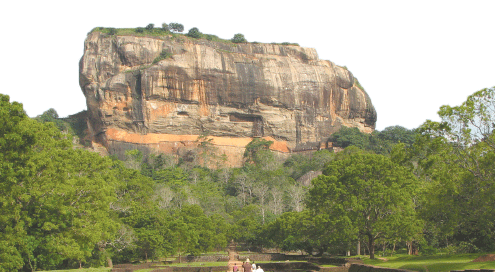
Sigiriya Under Threat
Sri Lanka is a beautiful country filled with nature, forest cover, ecological and water provisions, different species of birds wildlife and so on which also includes several world heritage sites declared by the UNESCO and reserved in the constitution by the government. One may agree the protection of nature and the environment in the nation is only given in the papers and is not implemented.
Sigiriya today is a UNESCO listed World Heritage Site and one of the best preserved examples of ancient urban planning.It is the most visited historic site in Sri Lanka. Destruction under the name of development takes place all around the country to which the environmentalists and the conservationists were unhappy of the plans of government as all projects in common, destroy the nature and the archeological values of them.
According to the ancient Sri Lankan record the Culavamsa, this site was selected by King Kasyapa (477 – 495 CE) for his new capital. He built his palace on the top of this rock and decorated its sides with colourful frescoes. On a small plateau about halfway up the side of this rock he built a gateway in the form of an enormous lion. The name of this place is derived from this structure the Lion Rock. The capital and the royal palace were abandoned after the king’s death. It was used as a Buddhist monastery until the 14th century.
Sigiriya is an ancient rock fortress located in the central Matale District near the town of Dambulla in the Central Province, Sri Lanka. The name refers to a site of historical and archaeological significance that is dominated by a massive column of rock nearly 200 meters (660 ft.) high. The rock fortress is now under threat as nearly 15 acres of forest cover of the sanctuary has been cleared for luxury hotel constructions. Measures were in place to begin the constructions but were put on hold as the villagers and the environmentalists began objecting to the move with the support of the Central Environmental Authority (CEA), Department of Wildlife Conservation (DWC), and Department of Forest Conservation (DFC)just two years ago. Nevertheless, they have recently started the deforestation for hotel construction giving it a fresh start.
It is claimed that leading businessmen who were backed by the higher rank politicians of the country are involved in the luxury tourism hotel constructions.
From where exactly is the authorisation given to such businessmen and politicians, is the unanswered question that remains since the environmental issues began in the country. It is a sanctuary and more of a reserved place since 1993 and was protected and preserved for more than two decades. It is an valuable site since it was recognised as one of the world heritage sites of the country. The cause for the hotel construction within the buffer zone of the Sigiriya is to attract more tourists into the country apparently, causing destruction to a site that has such archeological values for nearly 800 years will not increase the percentage of tourists that come into the country, the environmentalists lamented.
It is pathetic that the government turns a blind eye to the destruction and if the authorities in charge of protecting the nature and the archeological sites of the country are properly acting against the corruption and the violation it can be stopped, the environmentalists claim. There are enough legislations and regulations vested in the constitution to protect the reservations of the country and there is no necessity to increase or include new laws but to implement them. “Implementation is what matters the most when it comes to the protection of nature or any laws in the country,” the Director for Center of Environment and Nature Studies (CENS) Ravindra Kariyawasam stated.
According to the Flora and Fauna Protection Ordinance (FFPO) the ordinance even prohibits the entry of the public or anyone with no proper permits, but how did these businessmen manage to get into the illegal clearing of forests and the clearing of economically valuable trees such as Kubuk, questioned the environmentalists. A numbers of trees which were older than 200 to 400 years were destroyed during the deforestation whereas they should be protected as the forest area is a reservation of the country.
“There are lands that belong to the WDC and the DFC within the buffer zone of Sigiriya and had been cleared by burning and cutting the valuable older trees which will take another 100 years to recreate the nature and it is an absolute destruction done to the valuable assets of the nation,” Kariyawasam said.
Not only is the buffer zone and the sanctuary being affected by the irresponsible tourism project construction but also the wildlife, the birds that live in it and especially the elephants.
There is an elephant path crossing the forest within the Sigiriya archeological site which is one of the most used elephant corridors in the country. We have been educated several times about the escalating Human-Elephant Conflict (HEC) but a solid response is yet to be taken by the government.
In such a backdrop where the trees and the forest cover of the buffer zone is being cleared it also results in affecting the farmers and people who live in the close proximity of Sigiriya as the wild animals enter into the villages and their Chena cultivation areas. It also results in destroying the water resources of the village by cutting down trees and clearing the forests for hotel constructions.
The government is concerned about the major projects in the country but not the daily lives of poor people and the farmers. This might even lead the farmers to leave their native place if they could not continue with their farming and cultivation. The environmentalists request the government to look into the destruction taking place in the country under the name of development and to ensure that the National Environmental Act (NEA) and the FFPO to protect the environment and the archeological sites are implemented and take action if violated.
However, the Sigiriya and its buffer zone had been under threat since the Rajapaksa regime as they were in search of treasures including a few of the archeological sites in the country. The site was damaged by the archeological department itself under the directives of the Rajapaksa regime for treasures. Even though the search for treasures has been stopped under the new government, the destruction of nature has not been stopped.
Nevertheless, it is important to assess the impacts of the destruction and its results before any projects or development is being done within the reservation of the country to ensure their safety. An Environment Impact Assessment (EIA)is a crucial report that should be conducted before any changes are done to the reservations, but no such reports were conducted regarding the Sigiriya hotel constructions. It is also obvious that the reports will be against the hotel projects as it definitely would harm the archeological site.
The environmentalists alleged if they can destroy the reservations without any permission from relevant authorities they should be either an individual or a group of people who are backed by influential politicians of the government and the President as the Minister for environment should consider to protect the nature and to implement the laws. However, when contacted by The Sunday Leader the Director General of the Archeological Department of Sri Lanka Senarath Dissanayake said that the department is unaware of 15 acres of land being cleared within the buffer zones of Sigiriya for hotel constructions, and will look into the matter very soon.
Source : 14/08/2016 The Sunday Leader http://www.thesundayleader.lk/2016/08/14/sigiriya-under-threat/

Sustainability now: Let’s leave the waste stigma behind
(Ecco Ponto co-operative’s depot, where Rio 2016’s waste pickers will sort through recyclable goods from the Games )
Despite the controversies associated with the Rio 2016 Olympics, some news seem promising.
Recently the Guardian Newspaper has shared an article on the experiences of Brazilian waste pickers who faced severe stigma due to their occupation before being formally contracted to handle recyclable waste during the Olympic Games 2016 within a program started by Rio 2016, a large corporate and the Brazilian Government. They now earn more than double per day in addition to their share from the sale of the recyclable goods.
Hiring the waste pickers cost the organisers the same as hiring a private cleaning business, however with a much great social benefit. It is estimated that the pickers would be handling not less than 3,500 tons of recyclables over the course of the games.
In neighbouring India, occupations related to waste are still linked to stigma where even the envisioned profit from recycling or waste to energy cannot convince many businesses to engage in this sector, therefore being a barrier to innovative waste management solutions which India desperately needs.
In Sri Lanka we have a number of waste pickers who are sometimes independent and sometimes linked to the CMC or private companies. Where the corporate side of the waste management system seems respected, the waste pickers themselves face a similar situation as their counterparts in other countries. Their services are hardly recognised. Their contribution to less landfill (when segregating the recyclable items from the rest) and clean roads and public spaces is not sufficiently appreciated – yet no one of us would want to imagine a Sri Lanka without waste collectors.
Some weeks back I have visited a kids’ movie premiere in one of the renowned Colombo cinemas which was very well attended, by children and parents. After the movie finished and visitors left, the auditorium was covered in waste. Milk and juice was spilled on seats and the entire floor between the rows was filled with packaging, food and drink items. The carelessness of the visitors was shocking.
What about the educational effect on the children, who learn from small age onwards that littering in such a way is actually ok? That we have the “right to litter” to which extent we feel and someone else will come and clean it up anyways? That it is actually a part of entertainment and events to litter. The cinema cleaning team despite their efforts was not able to clean the venue until the next movie started.
It happens in each country that some people couldn’t care less about a clean environment; however the degree of littering and unsustainable waste management practices in Sri Lanka is shockingly high. Each spot where buses and vans hold for lunch breaks or people gather, even along the roads where intercity buses run, a vast amount of litter can be found. Why is that?
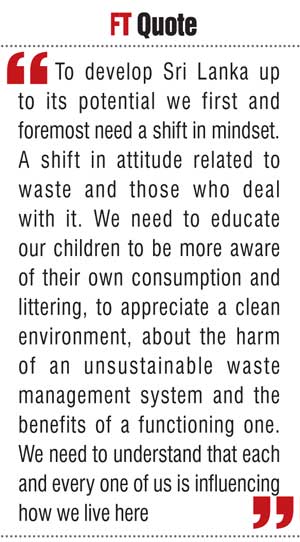 Sometimes there might not be bins available at certain places especially outside the cities, however instead of throwing the garbage on the ground or into the sea, why not keeping a bag and taking it to the next bin (as it is practiced in other countries)? One person’s litter can be easily taken, however as soon as even a small amount is disposed into the nature, other people see the spot as dumping ground and they continue to add their litter.
Sometimes there might not be bins available at certain places especially outside the cities, however instead of throwing the garbage on the ground or into the sea, why not keeping a bag and taking it to the next bin (as it is practiced in other countries)? One person’s litter can be easily taken, however as soon as even a small amount is disposed into the nature, other people see the spot as dumping ground and they continue to add their litter.
It seems that it is self-understood that someone else comes and cleans our dirt. And if not, it also doesn’t matter much, because we will then burn it or dump it somewhere where we can’t see it anymore – neglecting the fact that our waste behaviour is already backfiring on us – be it via the ground water, the soil and vegetables as well as animals we consume or air pollution.
In Sri Lanka we are very particular about what we are and foremost what we are not – an employee at an office or shop will rarely bend to pick up a piece of litter on the ground, the cleaning person needs to come to pick it up. We are too “good” for it.
Talking to officials within waste management organisations reveals that it is the prevailing opinion of residents that the sole responsibility for waste management lies with the respective organisations; even educational and awareness raising efforts to include the citizens in keeping our country clean fail due to this widespread attitude. Still, complaining and sometimes drowning in waste is perceived better than becoming active ourselves.
It is self-understood that each country needs a comprehensive waste management system which includes primarily government, private companies and civil society organisations. However a successful waste management system is heavily dependent on the contribution of each and every citizen starting from consumption patterns, ending with disposal behaviour.
In other countries, citizens are fined for not segregating or for littering. There is one way of introducing and executing strict laws, there is another one to increase the understanding of the harm of unsustainable waste disposal for each and every one, and the benefits of a sustainable system.
To develop Sri Lanka up to its potential we first and foremost need a shift in mindset. A shift in attitude related to waste and those who deal with it. We need to educate our children to be more aware of their own consumption and littering, to appreciate a clean environment, about the harm of an unsustainable waste management system and the benefits of a functioning one. We need to understand that each and every one of us is influencing how we live here.
Where it is the main responsibility of organisations to set up a solid system, we also have to contribute to it: in terms of segregation, recycling, not littering on roads, parks and other public spaces or less consumption overall. It is a bit of a chicken and egg situation; who needs to start – organisations or consumers? Truth is both! There will be only change if we understand our own responsibility as consumers and as citizens.
Sri Lanka is one of the most beautiful and bio-diverse countries in Asia, if not globally, including extensive fauna and flora which is admired by those living here and those visiting. It is not only our human nature to live atone with a healthy environment, it is also our duty as citizens to contribute to a clean and zero-waste Sri Lanka. If others can do it, why not us?
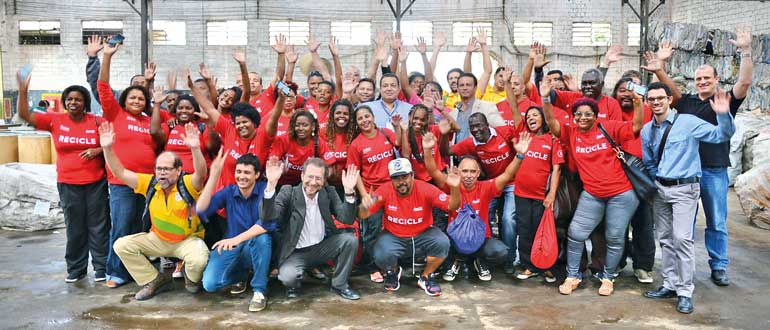
(Rio 2016’s waste pickers)
Source : 10/08/2016 Daily FT: http://www.ft.lk/article/560368/Sustainability-now–Let-s-leave-the-waste-stigma-behind#sthash.KrPEI8TH.dpuf
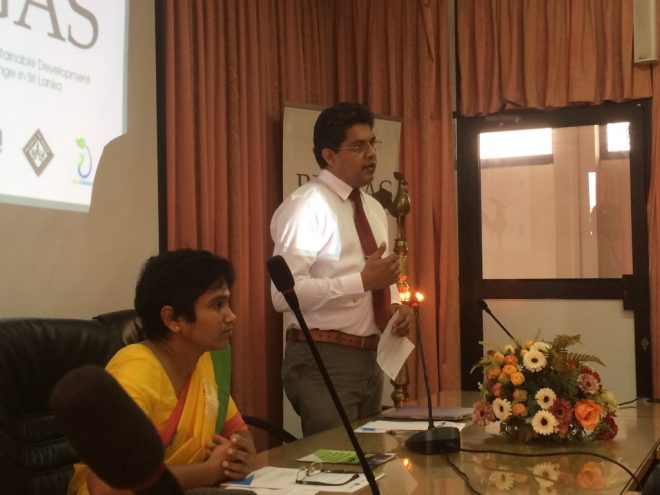
Promoting Biogas among Local Technical Officers for Greener and Sustainable…
Promoting Biogas among Local Technical Officers for Greener and Sustainable Construction Efforts
Janathakshan Gte Ltd and People in Need, Cz conducted a biogas awareness and promotional workshop on renewable energy, biogas and waste management for 65 technical officers recently at the Western Province Waste Management Authority. The technical officers belonged to local authorities in Western Province and are those in-charge of construction. The workshop was conducted under the EU-funded SWITCH Asia initiative on “Up-scaling Biogas Technology for Sustainable Development and Mitigating Climate Change in Sri Lanka”.
The workshop focused on the importance of addressing the Food, Energy and Environment or FEE crises, the impact of increased personal consumption against the decreasing amount of natural resources and the availability of biogas technology as an alternative to a civilisation heavily dependent on fossil fuels.
“Biogas technology used to be popular a few decades back but with a different intent of when there was less access to electricity. However, priorities have changed today and we have shifted from gaining access to electricity to trying to manage waste in limited land area.With this training designed for construction officers in biogas units we hope that the units constructed at local authority level will be doneat higher quality standards,” said Project Manager DamithaSamarakoon.
The Project’s objectives includes creating partnerships in the five select project areas in order to not only ensure sustainability of the project following the project period but also to empower local authorities in the promotion of biogas in their localities.
“It’s important for us to start a large scale project on managing waste in Western Province. We should be able to recycle at least 30% of the degradable waste collected given that 60% of waste is already degradable especially if segregated at disposal,” said Waste Management Authority Director NalinManapperuma.
Adding to his statement was Waste Management Authority Chairman RuviniNadeeshaDharmasiri who believed that it was important “we switch to technologies such as biogas in order to recycle without making more use of existing water resources.”
The project is focused on up-scaling biogas technologies for sustainable development, responsible tourism, economic growth contributing to poverty reduction and climate change mitigation in Sri Lanka. The project targets tourism Small and Medium Enterprises (SMEs), households and public authorities in the country while building the technical capacity of manufacture and construction SMEs in biogas technologies. The EU SWITCH-Asia initiative assists tourism SMEs and households benefit from sustainable solid waste management and cost savings through energy and resource efficiency. Tourism SMEs adopting “green” technology will also increase their marketing potential and gain the access to “green finances” provided by micro-finance institutions.
Source:08/08/2016 Lanka Business online http://www.lankabusinessonline.com/promoting-biogas-among-local-technical-officers-for-greener-and-sustainable-construction-efforts/
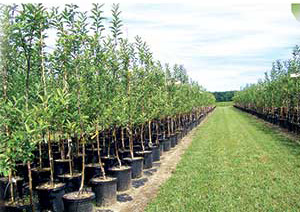
Urban landscaping with root balled trees a green-wash?
-tas-2.jpg)
Any national level project focusing environmental improvements through tree plantation should be based on increasing the total tree cover of the country at national level rather than shifting trees from one place to another as currently practiced through root balling methods for our urban landscaping programs. This root balling process also damages the environment of the original location as well, because of disturbance to other plants around it during balling operation. Also the root balled trees are very expensive when compared with the maintenance cost of a small plant to achieve the same height in a nursery.
Also the survival rate of root balled trees is also very low because of difficulty in adapting to new environment.Even newly planted trees have to be maintained at for least for six months to establish its roots to the new environment. This is very difficult task for root balled big trees because they are accustomed to original environment for long time. This is also a very expensive operation for plantation on a large scale like avenue planting in urban landscaping projects. However, this is not so for small plants about 2-3 ft. height grown in nurseries.
Another issue is the sustainability of newly planted trees. If someone takes interest of evaluating the sustainability rate of trees planted in these so called Tree Planting Campaigns inaugurated by politicians you can understand what I am trying to convey. I am sure it is less than 10% because of lack of maintenance after the inauguration. Maintenance should be done by regular watering and fertilizing at least for three months. Otherwise those inaugurations are simply Green Washing programs cheating ourselves.
I think above facts should be taken into consideration in planting trees in urban landscaping programs now in progress in Colombo City. Otherwise it could be a green-wash similar to whitewash.
Foliage planted in front of Temple Trees is a good example of such waste. My layman’s view is that plants grown in nurseries should be promoted for national level projects.
It is only a matter of maintaining those plants for some time until it grows to a safe height beyond which it is self-sustaining. It will help small scale nursery owners too.
Perhaps experts will shed light on this issue?
source :The Island 2016/08/06 http://www.island.lk/index.php?page_cat=article-details&page=article-details&code_title=149892
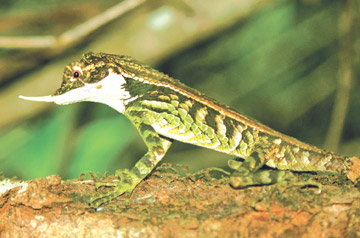
A clarion call for stronger action on wildlife trade
It only takes a simple search online, to find various types of endemic species of Sri Lanka, to purchase. From various types of spiders, to snakes and lizards as well as star tortoises, rare species are available for purchase at the click of a mouse. A shocking and alarming situation for environmentalists and conservationists, the racket has been going on with valuable species being smuggled out of the country to be sold as pets or prized possessions of collectors.
Environmentalists and wildlife experts claim that the rampant illicit wildlife trade within the country has caused the rapid depletion of Sri Lanka’s wildlife resources, while also gradually turning Sri Lanka into a transit hub for international illicit wildlife trade.
Despite major busts in recent times, by various government agencies, according to them the main obstacle in combating and curbing the illicit trade is getting the government genuinely interested in eradicating the poaching and smuggling of wildlife.
“No government past or present has taken a bona fide interest in curbing the illicit trade of wildlife in Sri Lanka,” charges former Director General, Sri Lanka Customs, Samantha Gunasekara. An environmentalist himself, Gunasekara says, the illicit trade of wildlife cannot be stopped if the government does not take positive and honest steps to combat it.
The illicit wildlife trade has become a major issue in Sri Lanka due to the country’s geographical location and rich biodiversity. This according to experts, has made it a key player in the local, regional and international illicit wildlife trade in recent times.
(Seahorses – Smuggled from India to Sri Lanka through sea for transit)
“The annual illicit trade is around US$ 150 – 268 Billion worldwide” Gunasekara claims. However, the real figures are much higher than that documented, he says.
Conservation International, an environmental activist group has identified Sri Lanka as one of the 25 leading and threatened biodiversity hotspots around the world. According to Gunasekara, Sri Lanka is among the top eight biodiversity hotspots due to the large number of endemic species found in the island.
Threatened
“While we have a large number of endemic species, many of them are threatened as most are concentrated in the southwestern part of the country where human population and activity are high” Gunasekara said.
With the country being rich in biodiversity, illegal traders may take the pick of the crop.
A species that had no demand 20 years ago, Sri Lanka today is number one exporter of Manta Rays. “There is a high demand for the item in the Far East, especially, in Hong Kong where it is considered a delicacy” says Gunasekara adding that there are no regulations in the country to protect the species. The Manta Ray is a protected species in international waters under the Convention on the Conservation of Migratory Species of Wild Animals and Sri Lanka being a signatory to the Convention should be looking into the protection of the species.
According to Dinal Samarasinghe, Research and Project Officer of Environmental Foundation Limited, star tortoises and black tortoises too are popular commodities in the illicit trade.
“They are sold as pets,” he said, adding that Lizards and Butterflies endemic to Sri Lanka too can be easily found for purchase online, particularly in Europe.
A report compiled by Sandra Altherr in 2014 found that many rare species of Sri Lankan reptiles such as the Rhino horn lizard, Pygmy Lizard, Black Cheeked lizard and the hump snout lizard are being openly traded online in Europe causing grave concern among conservationists and environmentalists locally and internationally, as many of these species are vulnerable to extinction. The demand for edible birds’ nests, seashells, various types of fish and plants such as walla patta too remain high in the list.
Gunasekara claims, the country is now becoming a major transit point in the region for seahorses, sandalwood, red sanders, rosewood and ivory. “However, through detections and busts the trade has dwindled,” he said.
Nonetheless, syndicates that run international illicit wildlife trade rings continue to use Sri Lankan waters to smuggle their goods, while avoiding Sri Lankan ports due to heightened monitoring by the authorities, he said.
While internationally and regionally the mentioned species are in demand, the trade of elephants locally, has become one of the most serious, in recent times.
According to Gunasekara the value of an elephant calf soared with the rise of the local trade. “Just 10 years ago an elephant calf cost one million rupees, but by last year it increased to Rs.30 million due to the local trade,” he said.
Wildlife poaching and smuggling is carried out for bush meat, while killing animals to obtain parts based on mythical beliefs too is common in the country.
(Rose wood bust by customs while transiting from Sri Lanka)
Samarasinghe says, recently a leopard which was found killed in Yala Block 3 had no teeth as they had been collected by the poacher. “There is a belief that it gives power to those who possess them,” he said.
Wildlife is smuggled out through various methods. Surprisingly, the customs have in the past made detections of sandalwood leaving the island through diplomatic cargo, while some use devious methods such as false bottoms in luggage, mixing the rare specimens among common species or changing the appearance of the smuggled wildlife.
“Wallapatta for example is almost non-existent today due to unregulated collection and trade,” says Gunasekara adding that such actions could drive the whole species to a brink of extinction while also causing the loss of aesthetic beauty of the country and an ecological imbalance.
“We lose so much of foreign exchange and revenue through the illegal trade,” he pointed out saying that it has been found that revenue from trade can even be trailed to criminal and terror organizations. Sri Lanka has been combating wildlife trade through traditional methods of detection and raids but as pointed out by the Chairman of the Industrial Technology Institute Niroshan Perera advanced technology such as the SMART conservation software, real time virtual watch rooms to combat illegal fishing, Wildscan application for species identification, Wildleaks a whistleblower website are all being used to combat the trade the world over, though they are not used in Sri Lanka, at present.
(Rhino Horned Lizard – Endemic to Sri Lanka and popular in the illicit wildlife trade. Can be found for sale online in Europe)
We use the technology available with the help of ITI to identify wildlife being smuggled,” Gunasekara said. He thinks combating the illegal trade should happen at the grassroots level.
According to Gunasekara, “the main issue is the incorrect policies of the governments.” It is seen in the existing government mechanism, where,”the policy is made by one agency, while implementation remains with yet another agency” he says. “There is just no cohesiveness in the plan” Gunasekara claims.
Environmentalist Supun Lahiru Prakash of the Biodiversity Conservation and Research Circle (BCRC) agrees.
“Two months have elapsed since the committee report on the wrongdoings of the Wildlife Department officers and involvement in the illicit trade of elephants, which has been handed over to the Minister of Sustainable Development and Environment” he says, adding that the silence on the matter is questionable. According to Gunasekara poor public participation due to lack of awareness and education in protecting wildlife also contributes to poaching and smuggling taking place freely.
While the situation is one of concern, no official from the Department of Wildlife was available for comment. With the former Director General of the Department of Wildlife Dr. Sumith Pilapitiya tendering his resignation in June no new appointment has been made yet.
(Ivory nabbed during transit before destruction in Sri Lanka)
Recommendations
Gunasekara recommends that proper and realistic policies should be implemented while rulers should have a genuine political will to make a real and lasting change. “We must address the gaps in the national legislation now,” he says.
According to Gunasekara legal validation should also be given to the Convention on International Trade in Endangered Species of Wild Fauna and Flora (CITES) which aims to ensure that international trade in specimens of wild animals and plants does not threaten their survival.
“We have been signatory to this convention for over three decades but we have not done anything yet to comply with it,” he laments.
While public education and awareness is needed, Gunasekara mentions that encouraging national pride and thinking is of utmost importance. “We must instil this in people and move them away from the currently existing indifference,” he notes.
“The thought that these depleting resources belong to all of us could make a world of difference in combating the illicit trade of Sri Lankan wildlife.”
(Source :Sunday Observer :http://www.sundayobserver.lk/2016/07/31/fea15.asp)
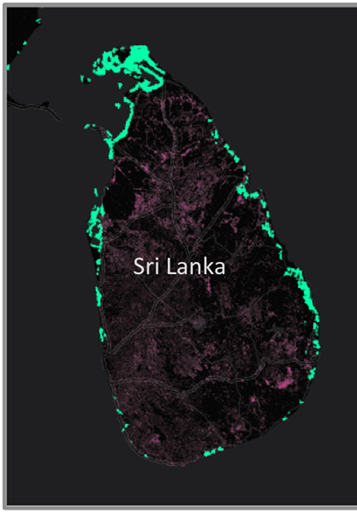
Sri Lanka set to become first nation to protect all mangroves
Sri Lanka’s president announced new mangrove protection measures – and inaugurated a museum that aims to teach people about the value of these globally threatened, coastal forests.
Mangroves provide many ecosystem services, from protecting shorelines and serving as nurseries for fishes and crustaceans to sequestering carbon.
Mangroves are one of the most threatened tropical ecosystems on the planet, declining by more than 50 percent in as many years.
Major drivers of mangrove deforestation include conversion for agricultural purposes, dam-building, and firewood collection. Scientists believe rising sea levels from global warming will be a big future threat.
Sri Lanka’s new museum is part of a project launched last year that aims to protect the country’s 8,800 hectares of mangrove forests and restore 3,900 hectares. The museum seeks to attract more than 20,000 visitors in its first year.
The tropical island-nation of Sri Lanka is getting its own mangrove museum. The museum, inaugurated by the Sri Lankan president Maithripala Sirisena today, will showcase how mangroves – saltwater-adapted forests found along coastal areas – contribute to ecosystems and livelihoods in the region.
Tucked away in a shaded spot at the edge of a mangrove forest on the western coast of the country, the museum seeks to attract more than 20,000 schoolchildren and eco-tourists in its first year.
“Mangroves swiftly absorb carbon dioxide and inject oxygen into the atmosphere, maintaining an ecological balance vital for the environment,” Prime Minister Ranil Wickremesinghe said in a statement. “It is my belief that the mangrove restoration project will generate much-needed awareness among key stakeholders such as the community, leisure sector personnel, tourists, and the general public.”
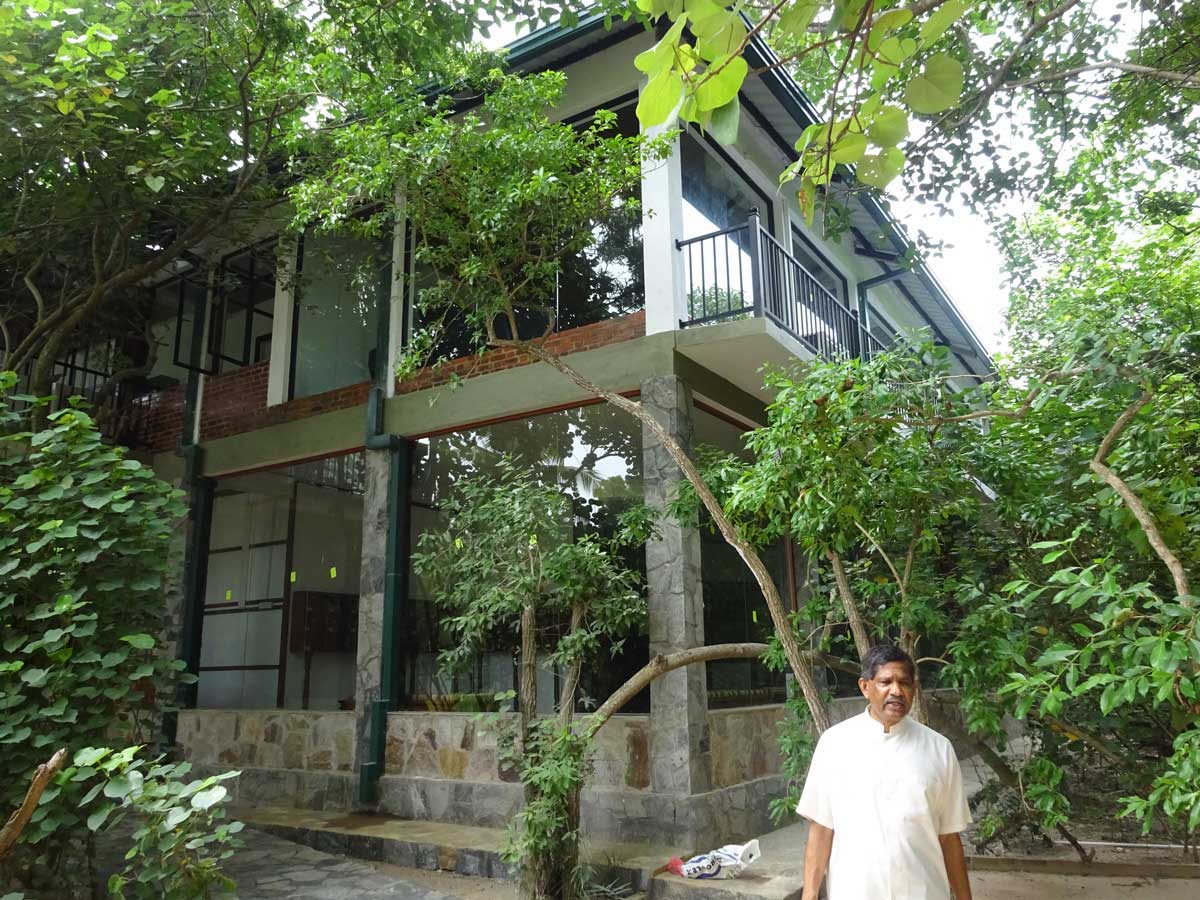
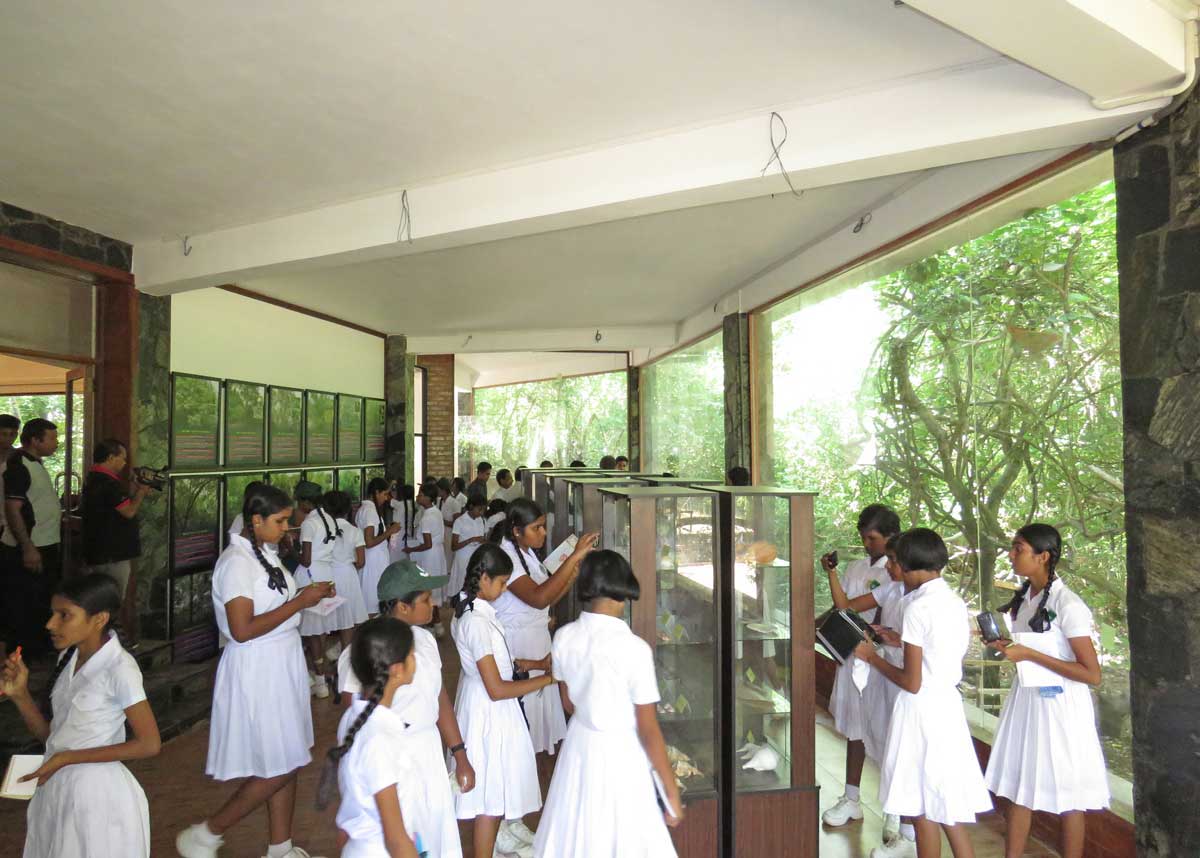
The museum is part of a nationwide project launched last year, funded by Seacology, a U.S. based island conservation organization, and executed by Sudeesa, a local NGO, earlier known as Small Fishers Federation of Sri Lanka.
The five-year project, which will cost $3.4 million, aims to protect Sri Lanka’s existing 8,800 hectares (34 square miles) of mangrove forests and to restore 3,900 hectares (15 square miles). Raising awareness of the value of mangroves is crucial, say those involved, since the project relies on local communities to protect mangroves by helping them adopt alternative livelihoods that don’t involve destroying mangrove forests.
Referred to as “magical” by Mary Randolph, a program manager at Seacology, mangroves play a role in many critical ecosystem services from protecting shorelines and serving as nurseries for fishes and crustaceans to sequestering carbon more efficiently than other types of forests.
According to Seacology, over half of the world’s mangroves – one of the planet’s most endangered tropical ecosystems – were lost to human disturbance in the past 50 years. Current global threats include the conversion of mangroves for aqua- and agriculture, damming rivers that supply fresh water and sediment to the trees, and rising seas fueled by global warming.
Sri Lanka has also seen its mangroves disappear, but accurate estimates for the rate of loss are difficult to find because little information exists about the country’s historical extent of mangrove cover. However, satellite data indicate Sri Lanka’s mangroves have experienced less recent degradation compared to many other countries.
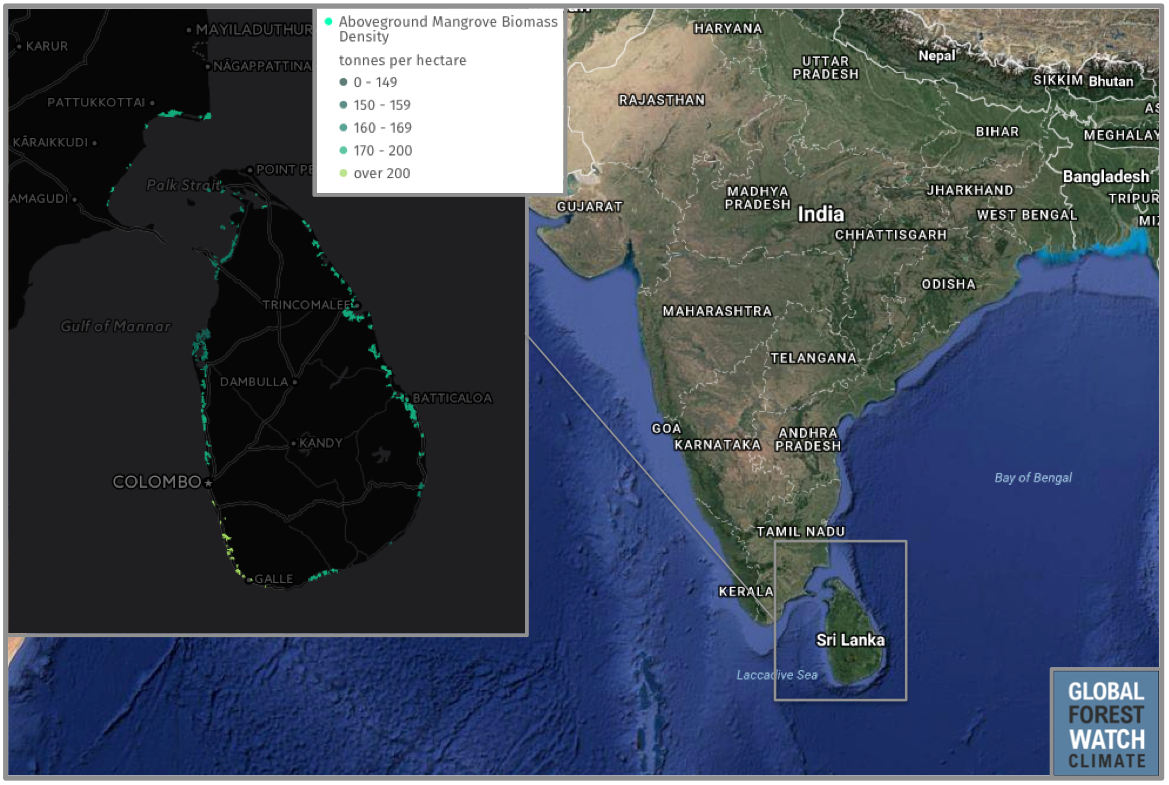

One of the first steps taken by the Sri Lankan government as part of this newest initiative was to survey and identify the country’s mangrove forests.
“The government of Sri Lanka has for the first time legally demarcated about 50 percent of all its mangrove forests [as protected areas],” Duane Silverstein, Executive Director of Seacology, told Mongabay. Sri Lanka has committed to protect all its mangroves going forward, the first and only country to do so.
Tundi Agardy, who heads the Marine Ecosystem Services Program at the NGO Forest Trends, attributed the thrust towards legal protection to the realization that mangroves act as shoreline protection. The importance of mangroves as natural buffers was driven home during the devastating tsunami that struck Sri Lanka in 2004 killing more than 30,000 people. Areport by the International Union for Conservation of Nature (IUCN) the following year assessed the impact on two coastal villages and found that there were two fatalities in the village that had a thick mangrove and scrub forest, while the other village that did not have such vegetation suffered almost 6,000 deaths.
“We can let the mangroves die or be cut off and put in place built structures to protect the shorelines,” Agardy said in an interview “It is just much more cost efficient to let nature do this for us.”
The breadth of Sri Lanka’s mangrove protection laws makes them different from the country’s other conservation laws.
“These laws are very unique because they single out not just an ecosystem or a geographic area like a coastal zone but they’re talking very specifically about a suite of plant species that need to be protected,” she noted.
Mangroves are mostly concentrated in the tropical and subtropical belts and are adapted to survive in harsh conditions like high salinity, low oxygen, strong winds, and high light intensity. However, anthropogenic influences have proven harder to survive.

“The biggest threats to mangroves in Sri Lanka include prawn farms, which have been greatly curtailed in recent years, collateral damage from the civil war, and impoverished people cutting down mangroves to use or sell as charcoal,” Silverstein said.
The new museum features installations showcasing the 22 species of mangrove trees found in Sri Lanka, as well as the fish and other wildlife that depend on mangrove-dominated ecosystems.
“It is a public recognition of the importance of mangroves, and educating people about how the economy and culture of this place depends so much on this ecosystem,” said Seacology’s Mary Randolph.
Recent interest in mangroves has been spurred by the discovery that mangrove forests are among the most carbon-rich habitats on earth. According to some estimates, mangroves fix three to five times more carbon than other forest types.
“They sequester carbon in the wood in the trunks and branches of the tree but the really big carbon sink is below ground and is formed by the roots of the mangroves,” said Karen L. McKee, a plant ecologist who specializes in wetland ecology. She added “when they die they do not decay quickly because the flooding retards the rate of decay of organic matter.” Mangroves produce biomass at a very rapid rate and combined with the slow decay, this leads to faster carbon accumulation.
While carbon sequestration and potential economic benefits from it have attracted some stakeholders, McKee told Mongabay that it would be a mistake to focus on just this one function. “We should not lose sight of the range of services that they provide.”
Citations:
Giri C, Ochieng E, Tieszen LL, Zhu Z, Singh A, Loveland T, Masek J, Duke N (2011). Status and distribution of mangrove forests of the world using earth observation satellite data (version 1.3, updated by UNEP-WCMC). Global Ecology and Biogeography 20: 154-159. doi: 10.1111/j.1466-8238.2010.00584.x . Data URL: http://data.unep-wcmc.org/datasets/4Hutchison J, Manica A, Swetnam R, Balmford A, Spalding M (2014) Predicting global patterns in mangrove forest biomass. Conservation Letters 7(3): 233–240. doi:
Hutchison J, Manica A, Swetnam R, Balmford A, Spalding M (2014) Predicting global patterns in mangrove forest biomass. Conservation Letters 7(3): 233–240. doi: http://dx.doi.org/10.1111/conl.12060; Data URL:http://data.unepwcmc.org/datasets/39. Accessed through Global Forest Watch on [date]. www.globalforestwatch.org
Source :03/08/2016 Mongaby https://news.mongabay.com/2016/07/sri-lanka-set-to-become-first-nation-to-protect-all-its-mangroves/














